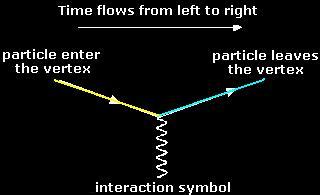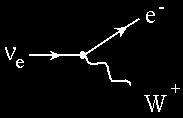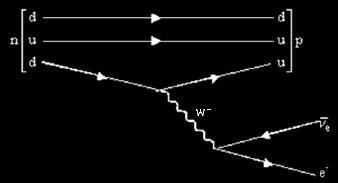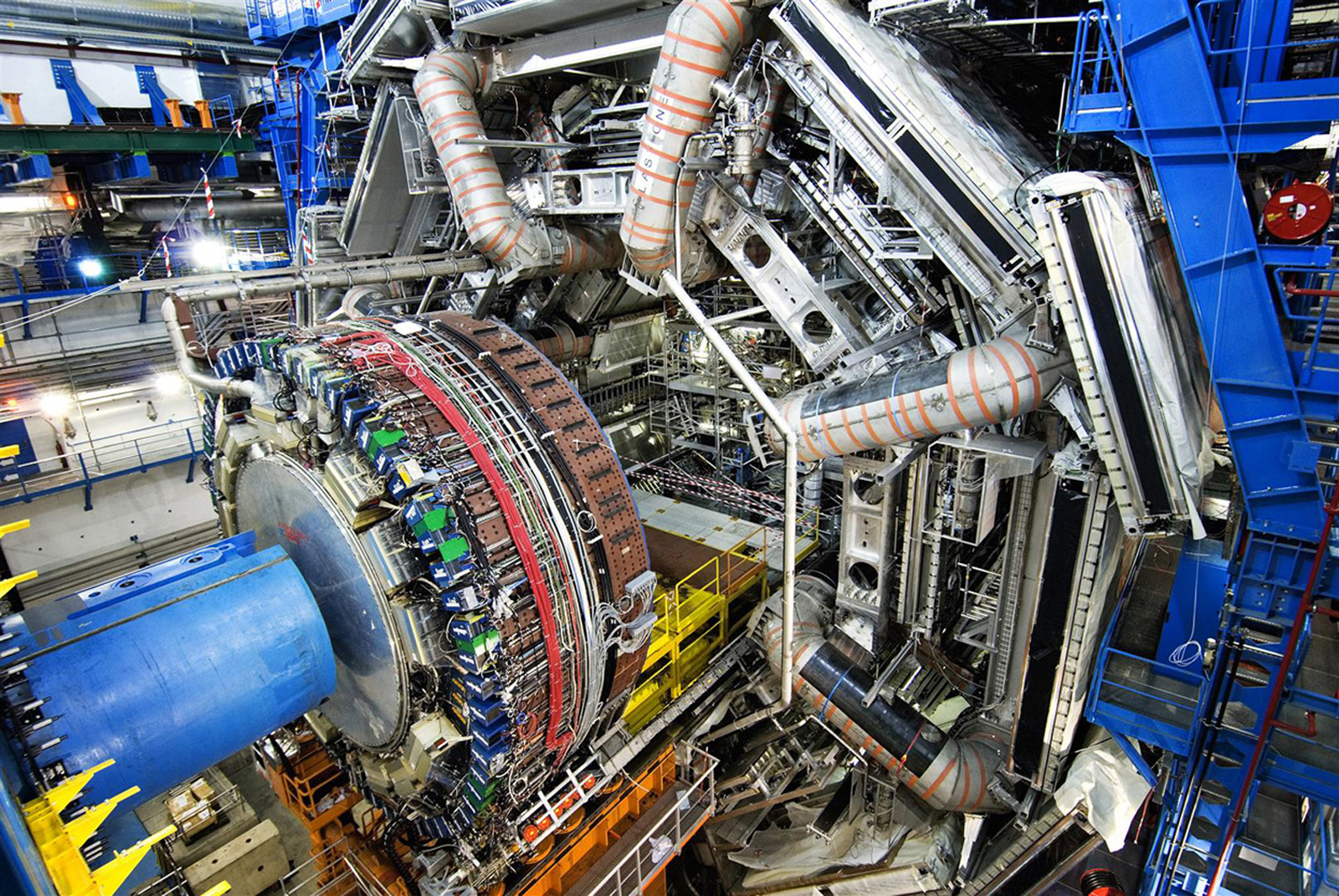Taking a closer look at LHC
Each of the three basic interactions can be described using a symbol called a Feynman vertex. To the particle physicist, each Feynman vertex represents a component of some sophisticated mathematics that is used to calculate various aspects of particle interactions. But we can use the vertices in a non-mathematical way to illustrate how quarks and leptons interact with each other. There are three basic vertices, each one associated with each of the fundamental interactions. There is an electromagnetic interaction vertex, a weak interaction vertex and a strong interaction vertex.
|
The basic structure of a vertex is shown. In the basic vertex shown, the interaction propagator symbol has been drawn vertical. When drawing interactions it is usual to incline the propagator symbol to suggest that it is moving towards or away from the interaction point. Important points to note about Feynman vertices: 1.- It is important to recognise that a vertex is simply a symbol, it does not represent tracks of particles in space andit is not a space-time diagram. |
 |
2.- The symbol is read from left to right. The left hand side of the symbol shows the nature of the particle before the interaction and the right hand side shows the nature of the particle after the interaction. (Note: it is also common to find Feynman diagrams using the convention that time flows from the bottom of the diagram to the top. This is just a matter of taste but the left to right convention is more commonly used).
|
3.- We use a forward facing arrow to represent a particle travelling forwards in time and a backward facing arrow to represent an antiparticle also travelling forwards in time. The next diagram represents the interaction of an electron neutrino producing an electron and a virtual W-Boson
|
 |
A couple of events well known (particle-antiparticle creation an annhilation):

Beta decay occurs when, in a nucleus with too many protons or too many neutrons, one of the protons or neutrons is transformed into the other. In beta minus decay, a neutron decays into a proton, an electron, and an antineutrino. In beta plus decay, a proton decays into a neutron, a positron, and a neutrino.
β- decay: n ⇒ p + e- +ūe β+ decay: p ⇒ n + e+ + ue
Let's see the Feynman diagram for a β- decay:

|
AUTHORS Xabier Cid Vidal, PhD in experimental Particle Physics for Santiago University (USC). Research Fellow in experimental Particle Physics at CERN from January 2013 to Decembre 2015. He was until 2022 linked to the Department of Particle Physics of the USC as a "Juan de La Cierva", "Ramon y Cajal" fellow (Spanish Postdoctoral Senior Grants), and Associate Professor. Since 2023 is Senior Lecturer in that Department.(ORCID). Ramon Cid Manzano, until his retirement in 2020 was secondary school Physics Teacher at IES de SAR (Santiago - Spain), and part-time Lecturer (Profesor Asociado) in Faculty of Education at the University of Santiago (Spain). He has a Degree in Physics and a Degree in Chemistry, and he is PhD for Santiago University (USC) (ORCID). |
CERN CERN Experimental Physics Department CERN and the Environment |
LHC |
IMPORTANT NOTICE
For the bibliography used when writing this Section please go to the References Section
© Xabier Cid Vidal & Ramon Cid - rcid@lhc-closer.es | SANTIAGO (SPAIN) |



